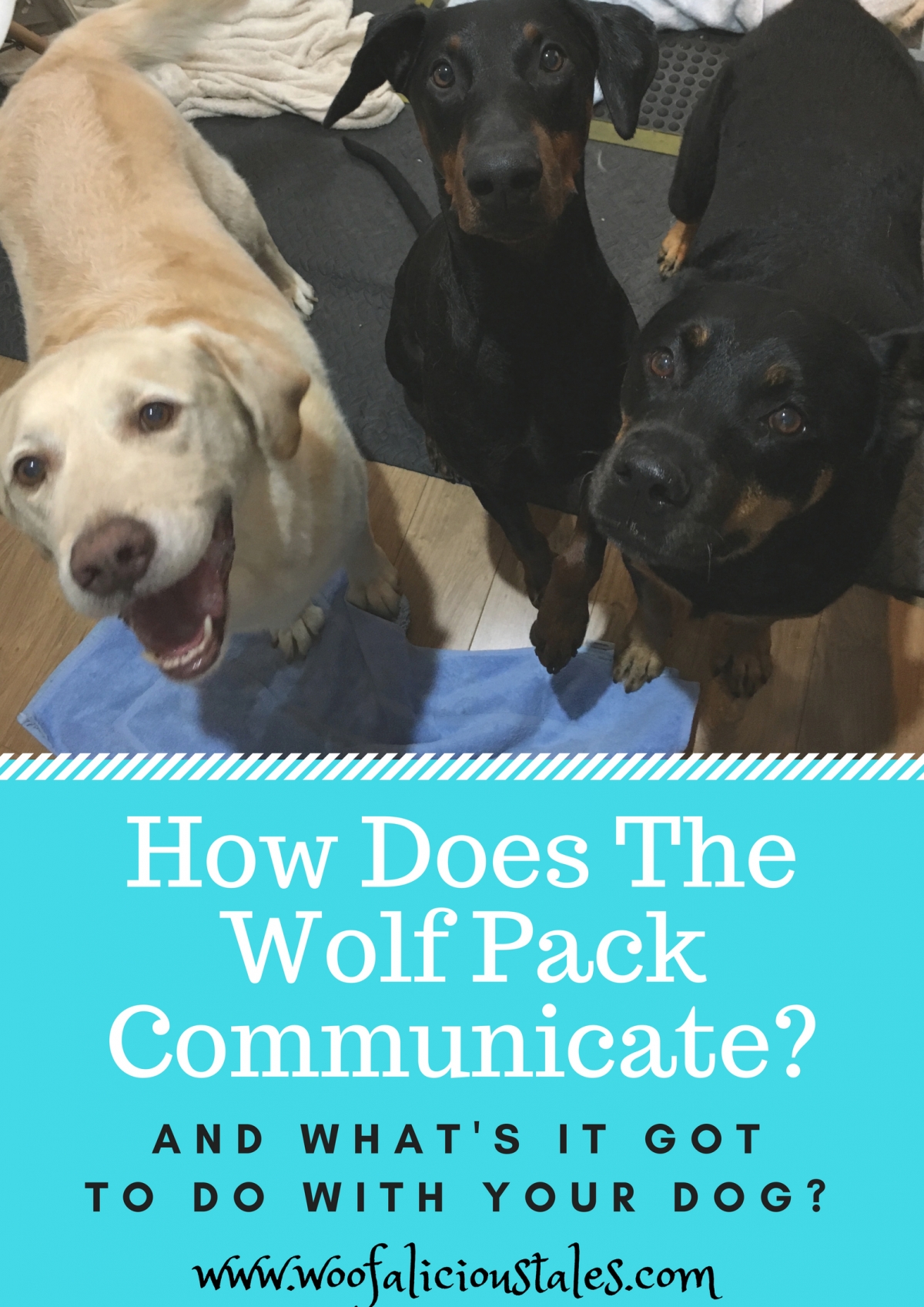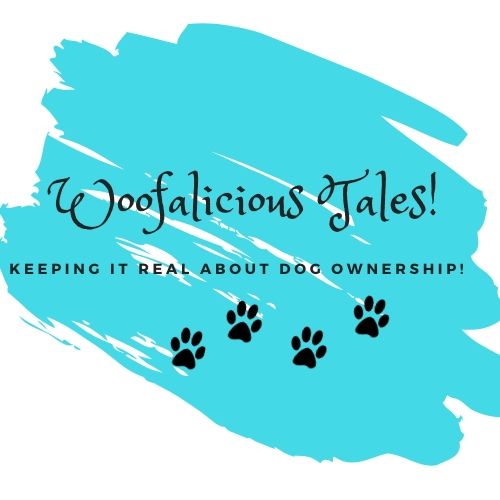
Hey Woofa’s,
Last week’s post on how the Wolf Pack communicate, AGAIN, took longer than what I expected!
In this post we look at the last way Body Language!
I was meant to cover all four ways in the one post, and now I’m on the 3rd post!!!!! They do a lot of communicating!
The reason I’m looking into how The Wolf Pack communicate is because it gives us an insight as to how our dogs communicate with us!
So far I’ve covered –
How Does the Wolf Pack Communicate – Energy
How Does the Wolf Pack Communicate – Scenting & Vocal Behaviour
In Review
The FOUR ways the Wolf Pack communicate are:-
- Energy
- Scenting
- Vocal Behaviour
- Body Language
The Pack understands the Leader through these forms of communication.
This week I endeavour to cover how Wolves communicate through Body Language and how we can relate that to our dogs.
BODY LANGUAGE!
The alpha male of the Wolf Pack will stand high with his chest out and tail held high. This is not something he puts on it is something that is natural to him, which is why he’s the leader.
His chosen alpha female will stand near him. They are the alpha pair of the pack.
The pack leader can also control his pack by a certain look he gives the other members.
The pack leader’s mate will also discipline her pups in the same way, nudging them away from danger, attending to their whining, and displaying behaviour for them to copy.
Submissive pack members will hold their tails and heads down and low. They may display activities like crouching down, licking the leader’s muzzle, and they may even lay down on their side or back to show their vulnerable side to the dominant leader.
Anger – is generally displayed by ears being straight up and teeth bare, body stiff and alert.
Suspicious – teeth bare, ears back and squinting and body alert. Fight or flight is ready to kick in.
Play bow – front legs stretched out and raised hind quarters (looks like a slippery dip pose).
Play mode – include games of chase, jaw sparring (while standing or laying down), as well as whining, groaning or play growling.
Relaxed – ears off to the side, body relaxed and a neutral tail or wagging tail.
WHAT’S THIS GOT TO DO WITH MY DOG?
Not only are our dogs reading the body language of other dogs around them or when they’re out walking, they’re also reading our body language.
Our domesticated dogs still use the same form of body language as their ancestors did. However, add to their body language the energy we spoke about in the first post on How Does The Wolf Pack Communicate, and generally we can learn to read what our dogs are saying to us.
For Example –
If your dog is sitting down like they appear relaxed but their head is up and ears are up, they are alert but relaxed. To me this means they are scanning their environment for any danger.
If your dog stands over another dog with chest puffed out and tail straight, they are exerting their dominance over the other dog.
I.e Billy use to do this with Isabel who was his surrogate mother, she was the runt of her little so she was a smaller staffy. Billy would go up to her with a puffy chest and bump into her side, all she had to do was turn her head and bark at him and he would run away all playful and lay on his back in submission. To him this is how he instigates play.
This is why it’s important to also understand the energy of a situation. What appears to be aggression could be misunderstood and is actually role playing.
With a tail tucked low and up between the back legs shows fear, anxiety over a situation and a need to escape or avoid it.
Yawning can be a sign of anxiety, nervousness or excitement.
Pulling on the lead can be a sign your dog is needing to control the situation because you aren’t, or lack of impulse control, i.e. they just want to go where they want to go. Billy does this and we’re working on it.
Mounting another dog can be a sign of excitement, dominance or displaced anxiety.
Snapping and growling at another dog can be a sign of aggression, fear, defensiveness, frustration, anxiety.
i.e.: we have a local man who walks by our house every day with his two little dogs, one is a Pomeranian and the other is a Maltese Terrier. Now the Pomeranian barks at everything, every other dog, and person that it sees, whereas the Maltese terrier just wanders on like it doesn’t have a care in the world.
The gentleman is the first to tell you the barking dog won’t bite people because the back story is when they were out walking once a dog ran out and attacked the Maltese Terrier, and now the Pomeranian has become his guard dog. So by barking at everything, it’s sending out the energy of don’t come near us, or I’ll get you before you get us!!!
So not only is it important for us to understand our dog’s body language it’s also imperative for us to read the energy of the situation.

As Above, Billy is relaxed but alert, his head
and ears are up.

It would be safe to say here he is totally relaxed
and feeling safe.
In this clip above can you decide whether Billy is being aggressive or play barking?
WHAT DOES ALL THIS MEAN?
Like their ancestors The Wolves, our domesticated dogs use body language to communicate.
There are many many books and sites you can google to find out exactly what each and every movement your dog makes, means. However, to be able to read your dog’s body language is one thing, you also have to read the energy of the situation.
Once you can do both you’re well on your way to being able to understand what your dog is telling you.
It’s like learning a new language, it may take time but when you get it, you’ll get it!!!
In the comments below Billy would love to know –
Are you able to read your dog’s body language? What signs are they giving you?
Cheers

Related Posts
How Does The Wolf Pack Communicate?
Hey Woofa’s, Last week’s post on how the Wolf Pack communicate…
27 July 2018


Leave A Comment